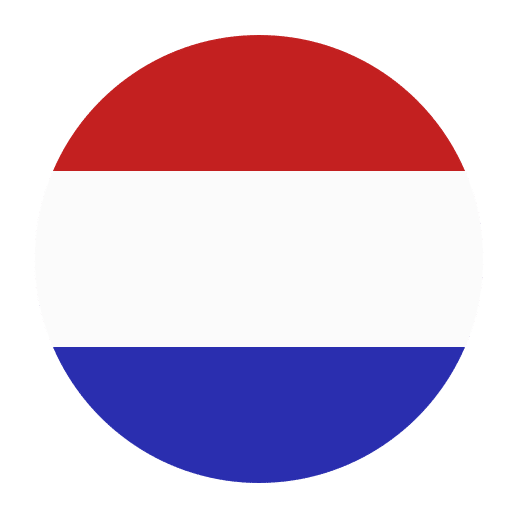The Dutch language, known for its distinctive guttural sounds and melodic intonations, possesses a unique feature that often fascinates and occasionally perplexes language learners: compound words. Dutch compound words are not only a vital aspect of the language but also offer a window into the culture and mindset of the Dutch people. Understanding these compounds can significantly enhance one’s proficiency in Dutch and provide deeper insights into the language’s structure and nuances. In this article, we will delve into the significance of Dutch compound words, exploring their formation, types, and the role they play in communication and cultural expression.
The Mechanics of Dutch Compound Words
Compound words in Dutch are formed by combining two or more words to create a new term with a specific meaning. Unlike in English, where compound words are often hyphenated or separated by spaces, Dutch compound words are typically written as a single, continuous word. This linguistic feature allows for a high degree of creativity and flexibility, enabling speakers to coin new terms as needed.
Types of Dutch Compound Words
Dutch compound words can be categorized into several types based on the parts of speech involved in their formation:
1. **Noun + Noun Compounds**: These are perhaps the most common type of compound words in Dutch. Examples include “boekenkast” (bookcase) and “voetbal” (football). The first noun usually serves as a modifier for the second noun, providing additional context or specificity.
2. **Adjective + Noun Compounds**: In these compounds, an adjective modifies a noun to create a new meaning. For example, “groenblijvend” (evergreen) combines “groen” (green) with “blijvend” (lasting).
3. **Verb + Noun Compounds**: These compounds are formed by combining a verb with a noun, often indicating an action related to the noun. An example is “stofzuiger” (vacuum cleaner), where “stof” (dust) is paired with “zuiger” (sucker).
4. **Noun + Verb Compounds**: Less common but still significant, these compounds involve a noun and a verb. For instance, “slaapwandelen” (sleepwalking) combines “slaap” (sleep) with “wandelen” (walking).
5. **Adjective + Verb Compounds**: These compounds feature an adjective modifying a verb. An example is “hoogspringen” (high jump), where “hoog” (high) modifies “springen” (to jump).
Rules and Patterns
Understanding the rules and patterns of Dutch compound word formation is crucial for language learners. Here are some key points to consider:
1. **Concatenation**: Dutch compound words are typically concatenated without spaces or hyphens. This can result in long, sometimes intimidating words, such as “arbeidsongeschiktheidsverzekering” (disability insurance).
2. **Linking Elements**: In some cases, a linking element (typically an “s” or “e”) is inserted between the components of a compound word. For example, “zonneschijn” (sunshine) combines “zon” (sun) with “schijn” (shine) and inserts an “e” to facilitate pronunciation.
3. **Plural Forms**: When the first component of a compound word is a noun that naturally has a plural form, it usually remains in the singular form within the compound. For example, “kinderdagverblijf” (daycare center) uses “kind” (child) rather than “kinderen” (children).
The Cultural Significance of Dutch Compound Words
Dutch compound words are more than just linguistic constructs; they reflect the culture, values, and worldview of the Dutch people. The ability to create new words by combining existing ones speaks to a culture that values efficiency, practicality, and directness.
Efficiency and Clarity
One of the hallmarks of Dutch culture is a preference for efficiency and clarity, and this is mirrored in the language. Compound words allow for concise and precise communication, reducing ambiguity and enhancing understanding. For instance, “ziekenhuis” (hospital) literally translates to “sick house,” providing an immediate and clear understanding of its purpose.
Innovation and Adaptability
The Dutch are known for their innovative spirit and adaptability, qualities that are evident in their language. The ability to coin new compound words enables Dutch speakers to keep pace with technological advancements, societal changes, and emerging concepts. For example, “computerprogramma” (computer program) seamlessly integrates the English word “computer” with the Dutch “programma” (program), reflecting the global influence on the language.
Reflection of Daily Life
Dutch compound words often encapsulate aspects of daily life, capturing the essence of common experiences and activities. Words like “fietsverhuur” (bike rental) and “huisarts” (general practitioner) provide insights into the importance of cycling and healthcare in Dutch society. By learning these compounds, language learners gain a deeper understanding of the cultural context in which they are used.
The Role of Compound Words in Dutch Literature and Media
Dutch compound words play a significant role in literature and media, contributing to the richness and expressiveness of the language. Authors, poets, and journalists often employ compound words to convey complex ideas and emotions succinctly.
Expressive Power
The concatenation of words in Dutch allows writers to create vivid and evocative imagery. For example, the word “nachtmerrie” (nightmare) combines “nacht” (night) with “merrie” (mare), conjuring a powerful and unsettling image. This expressive power is a valuable tool for writers seeking to engage and captivate their audience.
Humor and Wordplay
Dutch compound words also lend themselves to humor and wordplay, a characteristic feature of Dutch literature and media. Puns and witty combinations often arise from the creative use of compound words. For instance, the word “koffiedik” (coffee grounds) can be humorously reinterpreted as “koffie” (coffee) and “dik” (thick), playing on the literal and figurative meanings.
Journalistic Precision
In journalism, compound words enable reporters to convey detailed and specific information efficiently. Headlines and articles frequently use compounds to capture the essence of a story in just a few words. For example, “klimaatverandering” (climate change) succinctly conveys a complex and multifaceted issue, allowing readers to grasp the topic at a glance.
Strategies for Learning and Mastering Dutch Compound Words
Given the importance and prevalence of compound words in Dutch, language learners must develop effective strategies for mastering them. Here are some practical tips to help you navigate this aspect of the language:
Build Your Vocabulary
A strong vocabulary foundation is essential for understanding and creating compound words. Focus on learning common nouns, adjectives, and verbs, as these are the building blocks of most compounds. Flashcards, vocabulary lists, and language apps can be useful tools for expanding your lexicon.
Practice with Context
Contextual learning is a powerful method for mastering compound words. Engage with authentic Dutch materials such as books, newspapers, and websites to see compound words in action. Pay attention to how they are used in sentences and try to infer their meanings from the context.
Break Down the Components
When encountering a new compound word, break it down into its individual components. Analyze the meanings of each part and how they contribute to the overall meaning of the compound. This analytical approach can help you decode unfamiliar words and enhance your understanding of the language’s structure.
Create Your Own Compounds
Practice creating your own compound words to reinforce your understanding and build confidence. Start with simple combinations and gradually experiment with more complex constructions. This exercise can also help you internalize the rules and patterns of compound word formation.
Use Mnemonics and Visualization
Mnemonics and visualization techniques can aid in memorizing compound words. Create mental images or associations that link the components of a word to its meaning. For example, to remember “luchtvaartmaatschappij” (airline), visualize an airplane (“lucht” – air) flying and a company (“maatschappij”) managing the flights.
Challenges and Considerations
While Dutch compound words offer many benefits, they can also present challenges for language learners. Here are some common difficulties and considerations to keep in mind:
Length and Complexity
The length and complexity of some Dutch compound words can be daunting, especially for beginners. Words like “belastingaangifte” (tax return) and “arbeidsomstandigheden” (working conditions) may seem overwhelming at first. However, with practice and familiarity, you will become more comfortable with these lengthy terms.
Pronunciation
Pronouncing compound words correctly can be challenging, particularly when they involve guttural sounds or unfamiliar consonant combinations. Practice speaking and listening to Dutch regularly to improve your pronunciation skills. Language exchange partners, tutors, and pronunciation guides can also provide valuable support.
Regional Variations
Like any language, Dutch has regional variations and dialects that can affect compound word usage. Be aware of these differences and try to expose yourself to a variety of Dutch-speaking contexts. This exposure will help you develop a well-rounded understanding of the language and its nuances.
Conclusion
Dutch compound words are a fascinating and integral aspect of the language, offering insights into Dutch culture, values, and communication. By understanding the mechanics, cultural significance, and expressive power of these compounds, language learners can enhance their proficiency and appreciation of Dutch. With effective strategies and practice, you can master the art of Dutch compound words and unlock new dimensions of meaning and expression in your language journey. Whether you’re reading Dutch literature, engaging in conversations, or navigating daily life in the Netherlands, compound words will enrich your experience and deepen your connection to the language.

